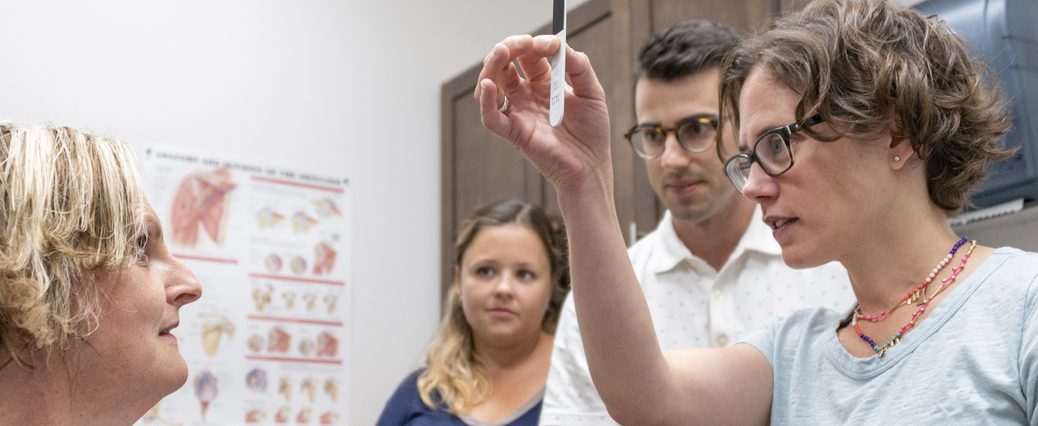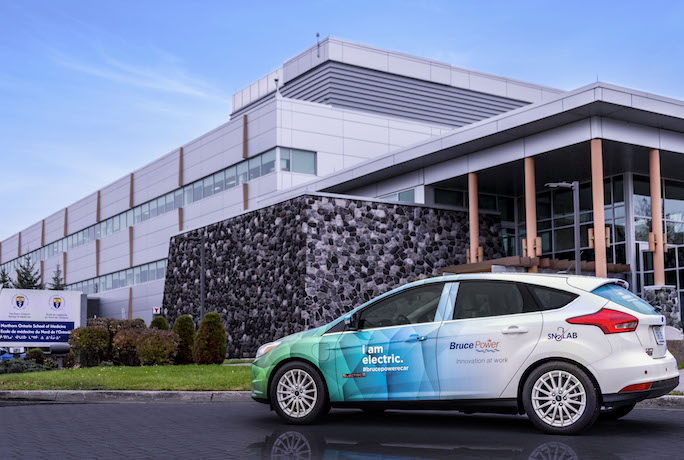A group of researchers at the Northern Ontario School of Medicine is studying the dynamics of concussion management in interprofessional team settings.
The team is lead by co-investigators Dr. Tara Baldisera, a family physician and associate professor of clinical sciences at NOSM; Dr. Jairus Quesnele, a clinical chiropractic specialist and associate professor at NOSM; and, Shannon Kenrick-Rochon, a nurse practitioner, professor of nursing at Cambrian College and Laurentian University and a lecturer at NOSM. It also includes Dr. Sylvain Grenier, Professor of Human Kinetics and Michelle Laurence, Laboratory Technologist and Registered Kinesiologist, both faculty in the School of Human Kinetics at Laurentian University, and Matthew Baker, a research assistant and student at Laurentian University.
Concussions affect many systems of the body. For that reason, an interprofessional approach is widely considered best practice, and is the recommended standard of care of the Ontario Neurotrauma Foundation and Concussion Ontario.
The team is exploring how factors like communication and collective competencies of an interprofessional health-care team can affect a patient’s recovery.
Over the past two years, the team has been following both male and female athletes from multiple varsity teams at Laurentian University, tracking and treating their concussions. They are looking specifically at the effectiveness of interprofessional concussion management teams in diagnosing and treating injuries from both return-to-play and return-to-learn perspectives by measuring recovery rates and progression to post-concussion syndrome, according to Baldisera.
Though their research is still ongoing, they have already seen some promising preliminary results, says Quesnele.
“We’re seeing the athletes return-to-play sooner overall, and seeing fewer protracted or long-lasting cases in our second year of follow-up versus our first-year of follow up,” he says. “We’re currently trying to figure out why that is, but our initial thoughts are that as we become more proficient and more collaborative in our approach, it’s translating into better recovery rates for some of our athletes.”
Quesnele also credits expanding the team in the second year of tracking, as well as more formalized communication with the university’s accessibility office and the athletes themselves for the positive results.
“We were able to add key members to the team, which allowed us to develop tailored treatment strategies, giving us a better approach for targeting these concussion deficits more effectively,” he says.
The cohesiveness of the team itself and the rapport they have developed may also have an effect on the progress the athletes make, according to the researchers.
They have added patient satisfaction as an evaluation tool in their research to better understand the effect of an interprofessional concussion management team in this context, says Baldisera.
“We’re looking at both the internal team dynamics and how we operate within our community setting,” she says. “What both makes us a better team and helps enhance patient-centred care?”
With the help of two Dean’s Summer Medical Student award recipients, Eve Boissoneault and Emily Aleska, the team has also been able to explore how sex differences can factor into recovery rates, as well as other elements of the recovery process.
Whichever elements of the team dynamic are found to affect the results of an interprofessional concussion management strategy, the ultimate goal is to be able to provide patients with the best care possible, says Baldisera.
“Not every patient needs every health-care provider that can treat concussion to be involved in their care,” she says. “We want our team to operate in a way that allows patients to get the specific care they need.”
Read more stories like this one in the latest edition of The Scope.





